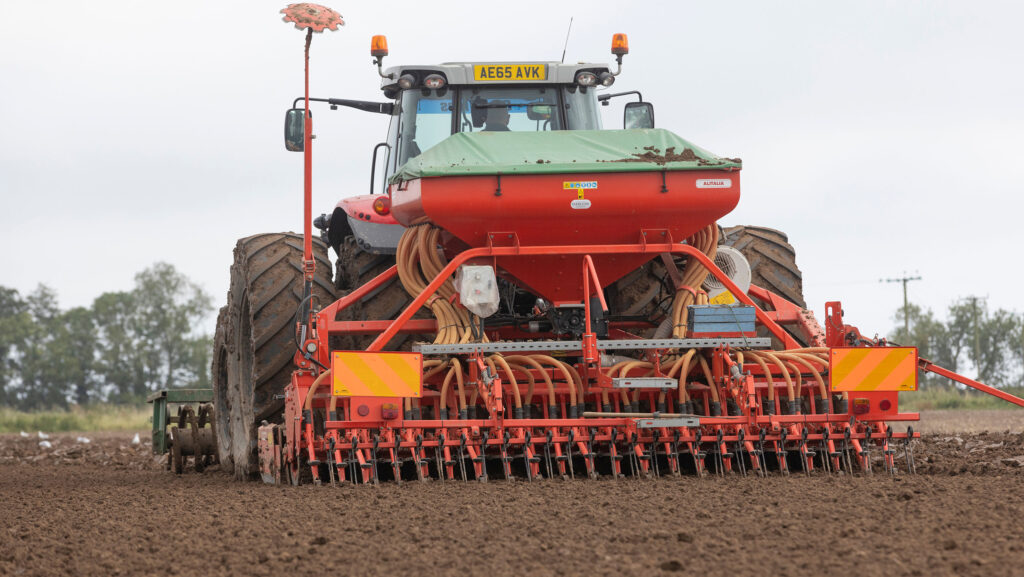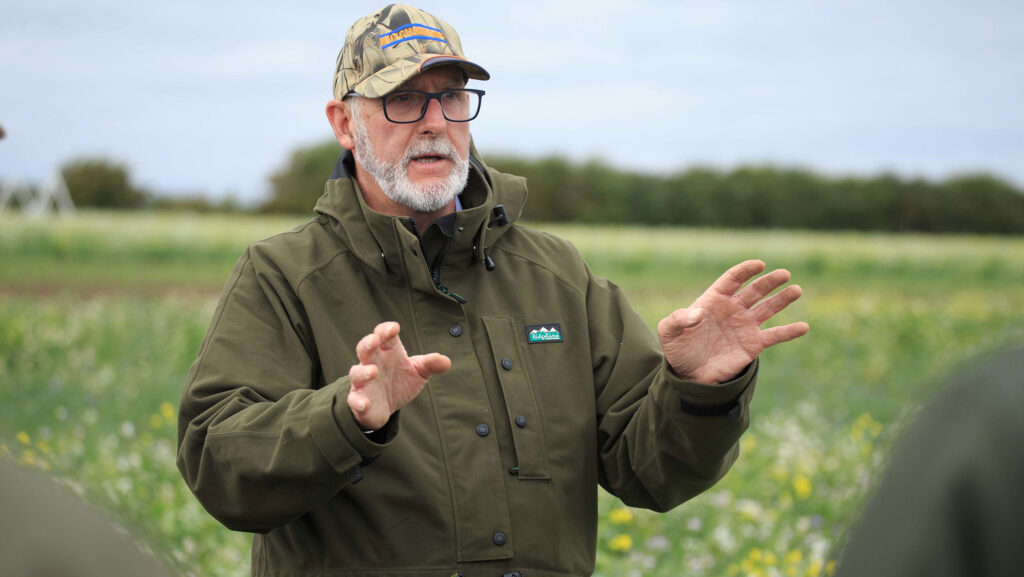7 steps for late drilling wheat success
 © GNP
© GNP Farmers with winter wheat still to drill this autumn need to be patient and do all they can to ensure crop establishment and soil health are not compromised following recent wet conditions, leading agronomy firm Hutchinsons says.
After record-breaking September rainfall in some areas, and more wet weather through much of October, the forecast for settled conditions into November will be welcome news for growers with crops still to drill.
However, Hutchinsons technical manager Dick Neale warns that soils are slow to dry out at this time of year, especially where there are no roots to draw moisture from depth.
See also: New Group 4 spring wheat performs for flood-hit Lincs farmer
Patience, picking the right conditions, and careful machine setup and operation will, therefore, be crucial to protect soils and give late-sown crops the best chance, he says.
“Pick your timing carefully.
“For example, at this time of year, drilling when it’s foggy risks the drill just picking up soil on the damp surface.
“It’s maybe better to use that time to apply the pre-emergence to any fields that have already been drilled and then start drilling when the soil has started to dry later in the day.
“Remember though, that even if the surface is dry enough to get on with the drill, soil is likely to remain wet at depth, so the biggest issue will be tractor wheelings.

Dick Neale © Hutchinsons
“Growers have to really focus on getting seed in as best they can in these conditions.”
Here, Dick outlines seven key areas to focus on when drilling in late autumn:
- Be prepared to wait – last year, some growers had to wait until January before there was a weather window to sow winter wheat, and in many cases these crops still performed really well, with some yielding 10 t/ha. Remember though, later-sown crops will need more care and attention to get the most from them in a shorter growing period
- Reduce tyre pressures – running the lowest possible tyre pressure is key to spreading machine weight over a larger area and therefore reducing soil compaction risk. VF (Very High Flexion) tyres offer a larger soil footprint than standard tyres, so use those if you have them
- Drive slower – higher forward speeds during drilling will disturb more soil, potentially bringing up wetter material that then sticks to machines and compromises seed-bed quality. Instead of travelling at 12kph, look to reduce speed to nearer 8kph
- Set up drills correctly – much less downward pressure is needed to push discs, tines or other parts into wet, soft soil, so adjust downforce accordingly, running the lowest possible pressure needed to get seed in correctly and avoid squeezing wet soil up through drill components. Equally, aim to run coulters at the minimum depth possible to avoid pulling up wet soil
- Focus on wheelings – wheelings will inevitably be an issue on wetter soils, so look to adjust drill setup to account for this, such as running coulters slightly deeper behind tractor wheels
- Leave headlands if too wet – headlands often remain wetter and are harder to create a good seed-bed on than the field centre, so if they are unworkable, consider leaving them to drill later, or maybe even sow headlands in the spring and manage them separately from the field centre
- Consider using smaller, lighter machinery – this will help to reduce the risk of compaction.
“Ultimately, it’s all about managing the fine details,” concludes Dick.
“The situation may still not be perfect, but it should get a crop in the ground.
“If it’s too wet though – and growers/agronomists know those fields or parts of fields where it’s just not going to be possible to drill this autumn – don’t even try.
“It’s far better to wait and put something in next spring, rather than trying to maul a crop into ground that’s just too wet.”

